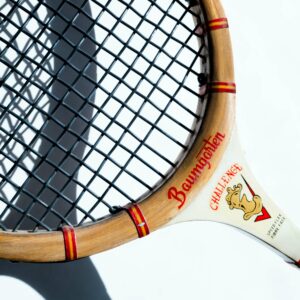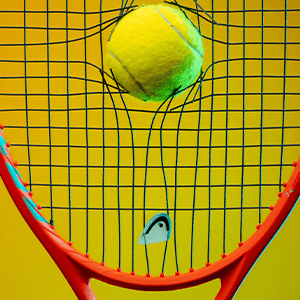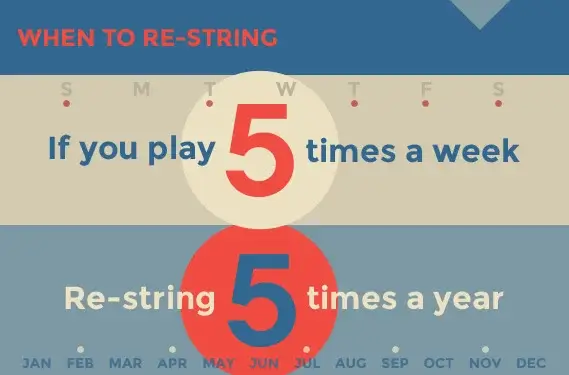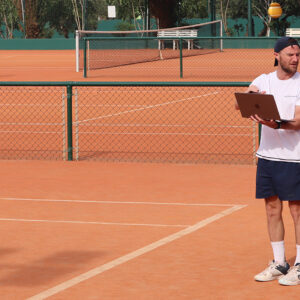An Introduction to Tennis Stringing
When picking out a pair of shoes, you wouldn’t just buy a pair without trying them on or keep them knowing they are uncomfortable / hurting your feet. You would see how they feel and whether they match up well with your shoe preferences. So why wouldn’t you do the same with your tennis strings? When you spend the money on a new racket that you have researched and tried out, why pick just any old string? If you are asking the same question then well done, however many people just buy any old string with no thought process into how it can affect their game.
Stringing your tennis racket is an important part of playing tennis. Without the right strings, you won’t get the most out of your game. There are a variety of strings available to choose from, each offering its own unique benefits. Knowing which strings to use can be confusing and overwhelming if you don’t know what to look for. In this blog, we’ll examine the different types of strings that are best suited for your game and give you the key information on all things tennis strings.
Want to check out more of our blogs on Tennis Rackets? Click Here
Key Information & Tension for Tennis Strings
The most popular type of strings are synthetic gut, multifilament and polyester.
– Synthetic gut strings offer good playability with decent durability.
– Multifilament strings have superior feel but low power output.
– Polyester offers maximum power but lacks in comfort terms.

Players should try out several different types of strings to decide which one is best suited for their style of play. We don’t want to add too much confusion and go on about all the different types, so read on to see our recommendations based on your tennis preferences.
You may have been told about tension before or asked what tension you would like on your racket when it is being restrung for you. Choosing the right tension on tennis strings plays an important role in improving overall performance as well as reducing injury risk due to excessive vibration or shock associated with low string tension.
When it comes to string tension and choosing, more power is available with a looser (lower) tension, while better control is possible with a tighter (higher) tension. Beginners will likely desire greater control, thus they might first choose a tighter tension. You can find our stringing tension recommendations below based on your tennis level.
Beginner: 54-55lbs (24.5-25kg)
Intermediate: 52-53lbs (23.5-24kg)
Advanced: 50-51lbs (22.5-23kg)

Why do Tennis Strings Break & When Should they be Replaced?
Tennis strings break for a number of reasons and understanding why they break is crucial to playing the game at an optimal level. Strings are arguably one of the most important components of a tennis racket; they are responsible for creating spin, power, control, and comfort when hitting. Knowing why strings break can help players maximise their playing performance and save them from unnecessary expenses associated with broken strings.
– A common reason why tennis strings may break at club level is due to improper tensioning. Improper tensioning can lead to string movement which causes friction and ultimately weakens the strings until they break.
– Incorrect string selection can also be a factor in why tennis strings break. A player’s skill level, racquet style and playing frequency must all be taken into consideration when choosing the right type of string for their specific tennis needs.
– Players that employ a lot of topspin are more likely to break their strings because topspin increases the main strings’ hold on the ball, which results in more movement in the strings and more wear and tear.
How often should you replace your Tennis Strings?
You can safely adopt the following maxim: Tennis Racket Strings should be changed as frequently a year as you play tennis each week. Essentially, if you play tennis twice a week, you should replace your strings every 6 months. Unless, of course, they break earlier which tends to happen with more advanced players who use spin and power in their game.
Tennis Stringing Key Facts
– More power is produced with a lower string tension (providing strings don’t begin to start moving during contact).
– Increased string tension results in improved ball control (for intermediate to advanced players).
– More power is generated by thinner, extra elastic and longer strings.

How to String a Tennis Racket?
Unless you play tennis regularly and plan to play for a consistent number of years, buying your own stringing machine may not be your best option for stringing your racket. It also takes some time to master stringing as a skill and become faster at it. Generally, it takes 45 minutes to an hour to string a racket for the first time correctly (on an electronic machine) and the process can be complicated for first timers. Did you know that the fastest time ever recorded to string a Tennis racket was just under 9 minutes!
The alternative and most common option even for experienced players is paying someone to string your racket for you. Although this is more expensive than stringing your own racket, you would need to be consistently playing for years for it to be worth while time and money wise to have a machine. Here at Active Away, recommend buying your own reel of string and give it to the stringer to use as it will be much more cost effective rather than asking them to use their own. Over time, it will save you a hefty amount!
Giving your tennis racket to a stringer will also ensure your racket is strung properly without mistakes which could occur if you strung it yourself. Whether you’re an experienced player or someone just starting out in the sport, having a properly strung tennis racket can mean the difference between a great performance and an average one. Want to learn more about stringing your own racket? Click here
Professional Tennis Players and Strings
The durability and quality of the strings used in a Professional Tennis Racket directly affects the performance of a player. Professional players must often change their string setup depending on the court surface they are playing on, as well as their own style of play. With frequent use and intense competition, it is not uncommon for a professional tennis player to break their strings during a match or practice session.
Strings will typically last anywhere from one to five hours for a Professionally ranked tennis player depending on how hard they are hitting, how often the rackets are played with, and the type of string material used. While some players may be able to get away with using fewer strings per match than others, most of the ATP and WTA Tennis players will switch rackets during an intense match for the feeling of new strings and a fresh racket due to their aggressive playing styles.


Which Tennis Strings do we Recommend?
Affordable & for club level players
Start with synthetic gut, a basic core string made from nylon which has been wrapped for improved performance. Synthetic gut is a clear choice for bargain hunters and newcomers because it has a low learning curve and an unbeatable price. Advanced players and those who tend to break strings frequently shouldn’t use this string as they will go through it too fast. Fun fact – Jim Courier won four Grand Slams with synthetic gut.
We recommend – Gamma Synthetic Gut
Durable & for Regular String Breakers
Polyester strings are usually the most durable and take the longest amount of time to break on average. Polyester strings naturally focus on control and have unparalleled spin potential due to their construction process. The strings snap back into place to increase resistance and it also helps increase spin.
If you follow Professional Tennis attentively, you might have observed that some players like to use polyester strings. Polyester strings are preferred by Professionals and many top-level tennis players for a number of reasons, but mostly because they are strong and have a lot of control and spin potential.
We recommend – Babolat RPM Blast (Rafael Nadal’s top choice since 2010)
Best Tennis String for Top Spin
When you look at the ATP versus the WTA , the men tend to hit with much more topspin than the women and we are starting to see a trend in up and coming players where they have a difficult spinny forehand and a flatter backhand. By using strings that are able to generate more top spin, they feel they can do a lot more damage by getting the ball to travel further after bouncing.
We recommend – Head Lynx Touch. Power needs to be brought with each swing and when top spin is added, these strings are made to bring the ball into the court no matter how much speed is applied.
Best Tennis String for Control
We can’t leave out Luxilon, one of the leading brands for Tennis Strings on the Professional Tour. With over 50% of the top 100 of the ATP Tour using the brand, it’s no wonder why the likes of Roger Federer, Kei Nishikori, Juan Martin del Potro & Milos Raonic have all used Luxilon to aid their game.
Our favourite is the Luxilon 4G, one of the most popular types of string on the tour, contributing to the present game’s explosive style of play by exercising precise control. Luxilon 4G’s unique selling point is that the string has been created through control-oriented goals.
Where to Buy Tennis Strings & our Top Tip when Buying a New Tennis Racket
Tennis Strings and Reels can be bought from most sporting goods retailers selling tennis equipment. Every tennis website will have strings available for sale and it is well worth buying a reel of string because in the long run it will work out cheaper. Check out The LTA’s Web Shop for a variety of string reels available for purchase and start saving money in the long run on stringing.
When you buy a new Tennis Racket it may arrive and already be strung. We urge you not to use these strings and here is why…
– The strings may have been sat there for years in the factory
– Factory strings have not been strung professionally and are usually rushed for mass orders
– The tension should be the same throughout and in factory strings, this is very rarely the case
– Old strings can cause muscle injuries such as tennis elbow (Find out more here)
– You won’t have the same feel, power or comfort level as you would on new strings
– The quality of the strings is not worth the possible implication of an injury
Top Tip – Always ensure you cut out factory strings from a new Tennis Racket and have your racket strung professionally for you.












